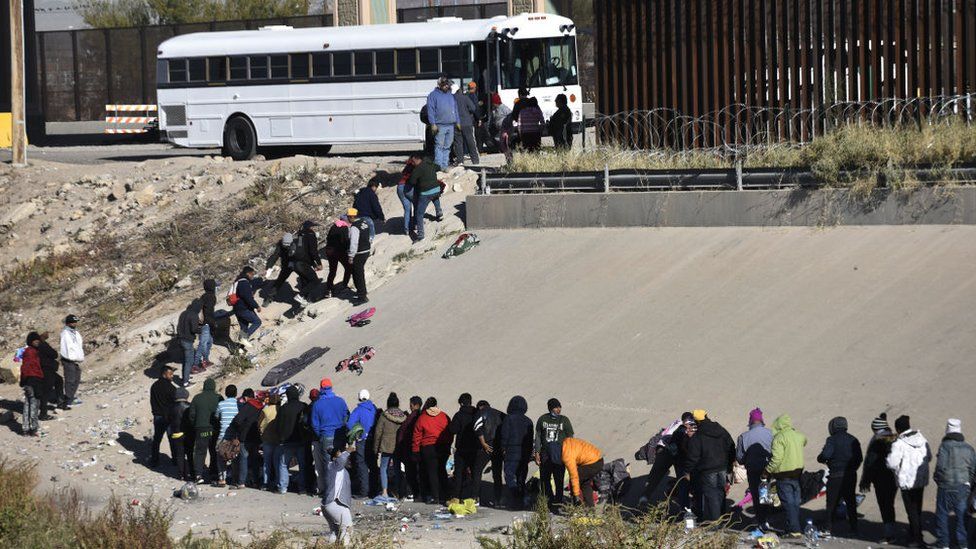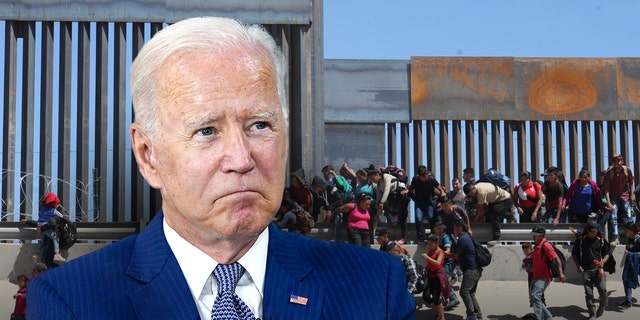

Biden’s Border Crisis: 7 Ways to Secure Our Nation Now
The situation at the U.S.-Mexico border remains a complex and evolving challenge. Characterized by fluctuating migrant flows, evolving smuggling tactics, and persistent humanitarian concerns, it demands a multifaceted approach that transcends simplistic solutions. While political rhetoric often dominates the conversation, a pragmatic examination of the issue reveals several crucial areas requiring immediate attention. This article explores seven key strategies to strengthen border security and address the humanitarian crisis simultaneously.
Beyond the Wall: A Multi-Pronged Approach
The notion of a single, easily implemented solution is a fallacy. Effective border security necessitates a layered approach, integrating technology, diplomacy, and humane policies. The “wall” – a frequently debated symbol – represents only a small fraction of the necessary components. To achieve lasting security, we must move beyond such simplistic narratives.
7 Strategies for a Secure and Humane Border
| Strategy | Description | Potential Benefits | Challenges |
|---|---|---|---|
| 1. Enhanced Technology Integration | Deploying advanced surveillance systems (drones, sensors, AI-powered analytics) | Increased detection of illegal crossings, improved resource allocation | High initial investment, potential privacy concerns |
| 2. Strengthening International Partnerships | Collaborative efforts with Mexico and Central American nations to address root causes | Reduced migration flows, strengthened regional stability | Requires diplomatic skill and sustained commitment |
| 3. Streamlining Asylum Processing | Implementing efficient and fair asylum claim processing systems | Reduced backlog, faster processing times, improved fairness | Requires increased resources and streamlined bureaucracy |
| 4. Targeted Enforcement | Focusing resources on disrupting transnational criminal organizations engaged in smuggling | Reduced human trafficking, drug smuggling, and other crimes | Requires intelligence gathering and collaboration |
| 5. Investing in Border Infrastructure | Modernizing existing infrastructure and strategically deploying resources | Improved border control, enhanced safety for agents and migrants | Requires careful planning and prioritization |
| 6. Addressing Root Causes of Migration | Supporting economic development and addressing violence in origin countries | Reduced migration pressures, increased regional stability | Long-term commitment, complex geopolitical factors |
| 7. Humane Migrant Processing Centers | Establishing well-resourced processing centers providing basic needs and legal aid | Improved humanitarian treatment, efficient processing | Requires significant funding and logistical planning |
Beyond the Headlines: A Deeper Dive
Enhanced Technology Integration: Moving beyond rudimentary methods, integrating AI and machine learning into border surveillance offers the potential for real-time threat detection and predictive analytics. This allows for proactive responses, rather than solely reactive ones.
Strengthening International Partnerships: Addressing the root causes of migration – poverty, violence, and instability – requires significant collaboration with neighboring countries. This includes joint operations targeting criminal networks and collaborative efforts to improve economic conditions in origin countries.
Streamlining Asylum Processing: The current backlog of asylum claims creates significant challenges. Streamlining the process, investing in resources, and implementing fair and efficient procedures are vital to reducing wait times and ensuring due process.
Targeted Enforcement: Focusing enforcement efforts on disrupting criminal organizations involved in smuggling is far more effective than broadly targeting all migrants. This requires intelligence gathering, international cooperation, and sophisticated investigative techniques.
Investing in Border Infrastructure: This extends beyond just physical barriers. It includes upgrading technology, improving transportation networks, and ensuring adequate resources for border agents.
Addressing Root Causes of Migration: Providing economic assistance, promoting sustainable development, and combating violence and corruption in Central American countries are essential long-term strategies to reduce migration pressures.
Humane Migrant Processing Centers: These centers can provide temporary shelter, medical care, and legal assistance to migrants, ensuring their basic needs are met while processing their cases efficiently and humanely.
A Holistic Approach: The Path Forward
Securing the border effectively requires a holistic, long-term strategy that goes beyond simplistic solutions. By integrating these seven strategies, the U.S. can move towards a more secure and humane border policy, one that addresses both security concerns and humanitarian needs effectively and simultaneously. The path forward necessitates a commitment to innovative solutions, international collaboration, and a recognition of the multifaceted nature of this ongoing challenge.

Additional Information
Biden’s Border Crisis: A Deeper Dive into Securing the Nation
The assertion of a “border crisis” under the Biden administration requires nuanced analysis beyond simple statistics of border encounters. While increased crossings are undeniable, understanding the underlying causes, the effectiveness of proposed solutions, and the broader geopolitical context is crucial for formulating comprehensive policy. Seven proposed solutions often cited need careful evaluation against their potential efficacy and unintended consequences.
1. Increased Border Security Funding and Personnel: While increased funding for border patrol agents and technology might seem intuitive, its effectiveness is debatable. Simply increasing the number of agents without addressing systemic issues like asylum processing backlogs and root causes of migration will likely prove inefficient and costly. For example, the “surge” strategy employed under previous administrations demonstrated limited long-term success in stemming migration flows. A more effective approach might involve strategic deployment of resources based on data analysis of high-traffic areas and smuggling routes, coupled with investment in technological solutions like advanced surveillance systems and improved data analytics to predict and preempt crossings.
2. Enhanced Border Wall Construction: The efficacy of border walls is hotly debated. While walls can act as a deterrent in some areas, they are costly, can be circumvented (tunnels, drones), and often displace migration flows to more dangerous and less-regulated crossings. Case studies from other countries reveal mixed results. For example, the wall between Morocco and Melilla has demonstrably reduced crossings at certain points, but has led to increased use of more dangerous routes. A more comprehensive approach might involve targeted wall construction in conjunction with other strategies, focusing on areas where walls offer the greatest return on investment, considering their environmental impact, and acknowledging their limitations.
3. Streamlining Asylum Processing: Backlogs in asylum applications create a pull factor for migrants, as prolonged waiting periods can encourage continued illegal crossings. Improving the efficiency of the asylum system through increased resources for immigration judges, improved technology for case management, and the establishment of regional processing centers could drastically reduce processing times. However, this requires significant investment and addresses only one aspect of the broader problem. The goal should be a system that is both efficient and fair, protecting legitimate asylum seekers while deterring fraudulent claims.
4. Strengthening Regional Partnerships: Collaborating with Central American countries to address the root causes of migration – such as poverty, violence, and lack of economic opportunity – is vital. This involves investing in development programs, supporting anti-corruption initiatives, and providing humanitarian assistance. The success of such partnerships depends heavily on the political stability and willingness to cooperate of the partner nations. Evidence suggests that successful partnerships are those that foster mutual trust and long-term commitments, not just short-term solutions.
5. Addressing the Demand for Illicit Labor: The demand for undocumented labor in the US fuels illegal immigration. Strengthening enforcement against businesses hiring undocumented workers, coupled with initiatives to provide legal pathways for seasonal workers, can help reduce this demand. However, this requires a delicate balance between enforcing labor laws and avoiding disproportionate penalties on businesses that may be reliant on undocumented workers.
6. Improved Information Sharing and Intelligence: Enhanced collaboration between US agencies and international partners to gather intelligence on smuggling networks and transnational criminal organizations is crucial. This involves sharing data, improving communication channels, and developing joint operations to disrupt smuggling activities. The success of this strategy depends heavily on building trust and confidence between agencies and nations.
7. Comprehensive Immigration Reform: Addressing the issue of undocumented immigrants already in the US is crucial for long-term solutions. Implementing a path to citizenship for eligible individuals could reduce the incentive for illegal crossings and integrate these individuals into society. However, political considerations surrounding immigration reform often make this a highly contentious and complex issue.
Conclusion:
Addressing the border situation requires a multi-faceted approach that combines increased border security with strategies to address the underlying causes of migration. Simply focusing on one aspect, such as increased wall construction, is unlikely to achieve long-term success. A comprehensive strategy demands careful consideration of each proposed solution’s potential effectiveness, unintended consequences, and integration with other initiatives. Continuous data analysis and evaluation are essential to adapt and refine policies based on their actual impact. The challenge lies in developing a balanced approach that prioritizes border security, while also upholding humanitarian values and addressing the systemic factors that contribute to migration flows.







